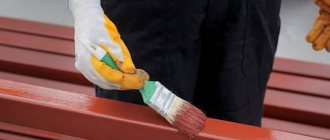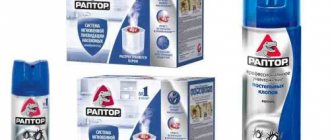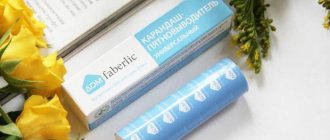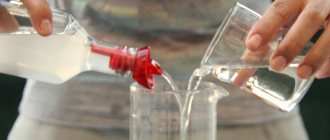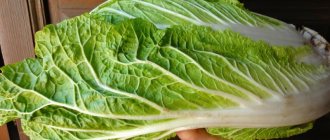The primer for metal against rust contains corrosion converters. As a rule, such a converter is orthophosphoric acid. As a result of its action, oxidation products enter into an active reaction with the primer and are converted into compounds that are not subject to oxidation. Thus, rust primer is usually applied to the surface of metal that is slightly affected by corrosion.
Oxides create a reliable, durable film on the surface of the metal, protecting it from oxidation and facilitating adhesion of subsequent applied coatings to the surface of metal products and structures.
But if the surface of a metal product is completely susceptible to destruction due to severe rust, then no primer can cope with such a problem. Therefore, it is necessary to promptly treat the metal with the means recommended for its protection.
Timely applied rust primer can protect the metal from corrosion. The active substances contained in modifier primers enhance the fluidity of their composition. This ensures that the primer penetrates deep into the material.
If scale has formed on the metal being processed, it is not recommended to apply a primer with corrosion modifiers to it. When rust is black, it is resistant to any modifiers.
Priming is carried out to improve the quality of subsequent painting, as well as to protect the metal from environmental influences. To protect the metal, an anti-corrosion primer is used, which is applied directly to the rust. It is used as a primary treatment for corroded metal. After this treatment, a rough surface is formed, which must be covered with insulating primers.
Timely and high-quality treatment with an anti-rust primer will reliably protect the metal from corrosion. And this, in turn, will extend the life of its further operation.
Anti-corrosion primer for cars
Automotive primer as a special material is used in automotive service for several purposes and in different situations:
- Prevention of corrosion processes in the car. After cleaning and processing the body to remove rust, a special primer is applied to the surface to prevent the appearance of new rust;
- High-quality coating in the form of varnish or paint.
- It perfectly retains moisture, prevents the appearance of new foci of rust and their penetration into the depths of the metal.
Review of popular manufacturers
The most popular rust primers are from the following companies:
- EVA. This brand produces converters, the components of which must be mixed in proportions of 3 to 100 before application.
- Stainless steel primer. This is an alkyd composition that is suitable for application to corrosive spots, provides increased moisture resistance and insulates the surface well.
- VD. The rust primer forms a dense film and has a matte surface.
- Bark beetle This manufacturer produces effective 3-in-1 products that are easy to use and relatively inexpensive.
There are other manufacturers offering products that differ in composition, price and properties. The choice depends on the preferences of the buyer and the parameters of the part to be processed.
Kinds
According to its composition, such soil is divided into several large types:
- Product based on polyurethane . Such soils have excellent elasticity. To apply such a primer, the metal surface must first be prepared and cleaned. This type of material has good protective properties and not only prevents rust, but also protects the metal from other influences;
- Alkyd primers. This type of material is considered one of the best on the market, as its qualities are excellent for preventing corrosion processes. A special feature of this material is the addition of zinc particles, which are known to resist corrosion well. Applying such material to a surface covered with rust, like any anti-corrosion primer, is strictly prohibited.
On video, anti-corrosion primer for cars:
Where should a modifier primer not be used?
Scale is resistant to phosphoric acid, so applying a primer containing a rust converter to such surfaces is not recommended. If black rust has formed on the surface, this indicates that the alloy contains magnetite, which is also resistant to modifiers.
You cannot use compositions with rust modifiers on surfaces where oxidation has occurred partially and most of it is metal without corrosion. Uncleaned paint, like scale, will also not interact with the converter, and the primer will not be able to penetrate through it. If during operation the metal structure was exposed to sulfur, hydrogen sulfide or ammonia compounds, then the use of a primer based on orthophosphoric acid is also inappropriate.
What is oxygen primer for a car?
An acid-based primer is a special primer that comes in cans or containers with liquid. The main application is to improve adhesion and anti-corrosion protection.
The product is suitable for treating car bodies and is used as an initial layer.
It is impossible to apply a paint coating or epoxy composition over this product, since additional painting suppresses the acidic properties of the primer.
Acid or reactive primer - what is it, what is it for?
To understand whether it should be chosen among the variety of products on the market for creating an anti-corrosion layer, you need to understand what phosphating primer is. It can be sold in cylinders, as well as a liquid solution. The composition uses phosphate acid, zinc can be added, which helps to obtain, in addition to protection against rust formation, a coating with good adhesion. The use of phosphate primer for the initial treatment of car bodies is popular.
It is permissible to apply only as a first coat; it will not be possible to apply paints and varnishes on top; another primer is applied.
They obtain a protective layer against corrosion thanks to the chemical elements in the composition; the layer has mechanical protection, which distinguishes it from other primer solutions. You cannot paint epoxy compounds on top; their elements cover the acidity property. At the same time, acid primer has a number of positive properties:
- Resistance to high temperatures;
- Water resistant, the primer layer does not react with salt and water. Thanks to this, the beneficial properties of the coating are preserved in winter;
- Resistant to the negative effects of environmental factors, withstands the effects of gasoline, oils and other compounds;
- A metal surface treated with etching primer will be able to withstand various influences of natural factors, without the need for paint treatment;
- Fast drying, the next coat can be applied in five minutes.
The use of phosphate primer for the initial treatment of car bodies is popular.
Features of application
Etching primer is classified as a primary primer and is applied exclusively before painting the car body. Moreover, this must be done in a much thinner layer, unlike other types of automotive primers, which is associated with very good adhesive properties. The application of the product must be uniform so as not to leave any chance for corrosion.
Attention! Applying paint directly onto the acid primer layer is strictly prohibited. After drying, it must be covered with secondary soil.
Acid primer works well on galvanized, aluminum, stainless, chrome coatings, as well as on iron, welds and other surfaces. However, it is prohibited to apply a phosphating primer to materials with a polyester base. If this instruction is neglected, it will lead to complete destruction of the protective coating and all work will go down the drain.
Acid soil is a toxic and flammable material, so when working with it it is very important to adhere to basic safety rules - do not use the product near open fire, heating sources and at high temperatures, avoid contact with skin and mucous membranes, protect eyes and respiratory organs.
What is the peculiarity of the composition
An acid primer for metal is a reinforced product that covers the surfaces of the product and creates a moisture-resistant coating that also helps eliminate corrosion. To completely eliminate rusty areas, experts advise applying solutions in sufficient quantities, and when choosing, give preference to high-quality and well-known brands.
As mentioned earlier, application is carried out directly on the metal; aerosols are usually selected, with which the product is sprayed. The degreasing stage must first be carried out. After complete drying, an acrylic primer mixture is applied to obtain a leveling effect.
Application to a surface where old putty remains or a poorly cleaned product is not allowed, otherwise the layer may move away from the base too quickly.
The main difference from epoxy or acrylic primers is the creation of chemical protection rather than mechanical protection. Therefore, no products other than an insulating primer mixture are applied on top.
An acid primer for metal is a reinforced product that covers the surfaces of the product and creates a moisture-resistant coating that also helps eliminate corrosion.
Features of working with primer
In order for the primer to apply evenly and give the desired effect, it is important to strictly follow the instructions for its use.
Required Tools
The following tools can be used to apply primer:
- Roller – Using different sized tools allows you to quickly cover different areas.
- Brushes – suitable only for small objects or complex joints.
- Spray gun - depending on the power and size, it can be used to treat large areas.
Surface preparation
Before applying the primer, it is important to pay attention to proper surface preparation. It includes the following steps:
- Mechanical cleaning of metal from old paint and varnish material, loose rust, scale. When carrying out the procedure yourself, you can use steel brushes or a grinding machine. In industrial conditions, sandblasting machines are used. In difficult places it is permissible to use abrasive substances. Sometimes heat treatment is used for this.
- Degreasing the surface. To do this, you can use any alkaline substances or special solvents. The specific option depends on the type of stains on the surface.
- Squeezing out the remaining water and drying. Compressed air or scrapers can be used to remove moisture. You can dry the coating in special chambers or use a hair dryer.
See also
The best brands of tile primers and how to prepare the composition yourself
Application technique
The rules for applying the composition depend on the type of primer. They are indicated in the instructions. Two-component substances must be mixed according to the proportions indicated on the packaging. If necessary, you can use a thinner. It must be selected taking into account the connecting component:
- for epoxy mixtures, xylene or ethyl acetate is used;
- pentaphthalic compositions can be diluted with solvent or white spirit;
- polyvinyl acetate substances are dissolved with demineralized water;
- Solvents R-4 and R-646 are suitable for polymer compositions.
After obtaining the desired consistency, the primer must be filtered and applied to the prepared surface using a roller, brush or spray. Small items can be primed by dipping.
How long does it take for soil to dry?
Processing should be carried out in 2-3 passes. In this case, each layer must be dried for 1 hour. It takes 2-3 hours to dry completely. It all depends on temperature and humidity.
What's included
The anti-corrosion primer contains several active components. Among them:
- Phosphoric acid. Used as a corrosion converter and removes large areas of rust.
- Polyvinyl butyral. Allows you to obtain a special film with high adhesive properties.
- Zinc. It is used for mechanical protection of metal surfaces and creates a thin anti-corrosion layer.
What is acidic soil made of?
Acid soil is a transparent composition with a shade of gray or light green.
As already mentioned, the composition of acid soils may differ from each other, depending on the manufacturer and have different proportions.
The base polymer is usually polyvinyl butyral; the composition also contains phosphoric (orthophosphoric) acid (small amount), isopropyl alcohol, zinc chromate (or zinc phosphate), talc (about 2%) and other additives.
Zinc chromate is a component that increases the corrosion protection of metal. In an etching primer, phosphoric acid reacts with the metal, while zinc chromate does not react chemically with the metal. In fact, zinc chromate can be added to primers with various polymers, such as epoxy, polyurethane. It adds anti-corrosion properties to the product to which it is added.
In some countries, the chemical reagent zinc chromate is banned due to its high toxicity, so the soil contains other components of a similar effect.
Purpose
The purpose of the primer is to coat metal surfaces to level them, increase adhesion to paints, and protect against corrosion. These compositions are suitable for application at home. The main objects of coverage are cars, supporting metal structures, and industrial equipment. After application, a durable film resistant to aggressive factors is formed.
Staircase covered with primer (Photo: Instagram / stroimagnat)
Main varieties
You can find 2 types of acid soil on sale:
- Based on 1 component.
- Based on 2 components.
One-component
Phosphate primer based on 1 component can be used without prior preparation. It can be purchased in cans for application without auxiliary equipment or in containers with a liquid solution. The second option is applied with a spray gun in 1 thin layer. When the coating acquires the required properties, it can be treated with acrylic with the inclusion of a hardener.
Two-component
Before applying the product to a metal surface, it should be properly prepared. The instructions mention the need to mix the main substance with the activator. The final consistency takes on both hard and soft forms. Experts advise choosing the first option, as it creates a strong and reliable film over the entire treated area. It is allowed to apply primer in 1, 2 or 3 layers, observing the proportions and basic recommendations of the manufacturer. There is a 5 minute pause between reuses.
Priming technique
When using, it is necessary to take into account the peculiarities of applying such products. The rust primer is applied as follows:
- The surface is cleaned from loose corrosion, dirt and dust. If necessary, it is degreased and washed.
- Apply a thin layer of primer; it is important that it has the same thickness over the entire area. For processing, use a brush, roller or spray gun; you can also use products available in aerosol form. The first layer of rust primer is applied as thinly as possible. In subsequent stages, the substance can be applied thicker.
- Allow the finishing coat to dry, and then, if necessary, treat the metal part with paint or varnish.
The drying time of individual layers varies depending on the air temperature indoors or outdoors, humidity, and other factors.
Types of material: one-component aerosol, two-component formulations
Acid anti-corrosion primer belongs to the category of primary primers (novol, body 960), which treat the surface of the car with a uniform thin layer in order to prevent rust from spreading.
Important! Painting a car over such a primer is strictly prohibited.
After drying these primers, secondary primers must be applied.
The main properties of reactive primers, including the body and novol brands, are wear resistance, resistance to aggressive salt environments and moisture. They are well preserved under various mechanical, chemical or atmospheric influences.
There are:
- one-component primary ones that do not require the addition of a catalyst. These include, for example, mobihel brand soil; they are also available in aerosol cans;
- two-component primary. A hardener must be added to such primers.
Phosphoric acid is added as such to acidic soil, which, when it reacts chemically with synthetic resins, anti-corrosion and organic pigments, generates heat.
However, it is not capable of melting dishes, even those made of plastic. These include brands body 960, novol protect 340 wash primer.
Useful! Acid primer is perfectly applied to such car metal surface materials as: aluminum, galvanized, chrome-plated and stainless steel coatings, welding seams, iron, and many others.
Release forms
Until recently, primer mixture for metal was produced only in the form of a thick putty in buckets of various capacities. But this form of release is not always convenient and in some cases it is simply impossible to use the mixture in this form. That’s why today you can find primer in cans on store shelves. This aerosol makes it easy to prime the most difficult to reach surfaces. In addition, the mixture in this release form is simpler and easier to apply and distributes more evenly over the surface.
Primer spray today is produced only by leading manufacturers and, despite its many advantages, it requires a certain skill in its use. However, according to experts, this particular primer is considered the most effective.
Protective properties of primers
Primers are also distinguished by the method of protective effect on the metal. What types of primers are there in this regard? It is best to look for each of them using a special letter marking. The following categories are distinguished:
- with a phosphating effect;
- passivating;
- tread;
- with inert particles;
- rust modifier.
Primer with phosphating effect
The composition contains phosphoric acid, which, when combined with metal, forms sparingly soluble phosphates. The resulting layer, despite its thinness (only 8-12 microns), is durable and has good adhesion. The primer is capable of penetrating into metal to a depth of 0.05 microns. After applying the first layer, you can immediately apply the second. It is easy to understand which of the primers has phosphating properties; they are marked with the letters VL.
Passivating primers
These products make the surface impervious to moisture (that is, passive) due to the chromates of certain metals contained in their composition. Thanks to this property, no oxidation reaction will occur.
To protect the fenders and underbody of a car from corrosion, a lead-lead primer is often used. When choosing a composition, it is also best to focus on the letter marking - GF.
Protective means
This primer protects the metal surface from the negative effects of the environment. The potential of the metal dust contained in it is lower than that of the car body. Thus, in relation to the car, such a primer acts as a protector. The letter designations EP and E refer to protective primers.
Compositions with inert particles
These primers mechanically protect the surface without interacting with other film-forming substances. These compounds are most often used during minor body repairs. Their markings, for example, are FL-OZK, GF-21.
Rust modifier
Essentially, this primer is a converter of corrosion products. In cases where rust removal is impossible for some reason, the composition is applied directly to the damaged area of the surface, interacting with it. Corrosion elements are converted by the modifier into a durable protective film. The composition in cans can be applied by spraying or brushing in two layers. A prerequisite for high-quality work with such a primer is an air temperature of at least +15 C0.
Composition and characteristics
Metal primers are compositions for coating metal surfaces, protecting them from rust, and correcting minor irregularities. After application, a durable film of minimal thickness is formed, which is resistant to environmental factors.
Depending on the composition, there are 3 groups of funds:
- aquatic;
- oil;
- combined.
The primer consists of substances that penetrate the structure of the material, protecting it from oxidation and rust formation. Characteristics:
- hardening speed;
- anti-corrosion properties;
- color (there are transparent and colored compositions);
- temperature at which the protective film retains its properties;
- viscosity, density;
- approximate consumption;
- release form - aerosol or liquid in a jar.
Peculiarities:
- Increased adhesion index. Improves paint quality.
- Reducing metal porosity. Reduces paint consumption.
This is interesting: Concrete contact characteristics - why and how they are used
Preparing the body for priming
The slightest damage to the car body can destroy the metal. The primer is an intermediate link between the metal body and the final layer of paint on the surface of the vehicle. An incorrectly selected composition leads to sagging of the paint, so it is not worth saving on the purchase of such material. Preparing the car body for priming includes:
- cleaning the work surface;
- degreasing the material for priming;
- preparation of personal protective equipment for working with acid primer.
If you apply a layer using an aerosol in a can, the coating will be more even than if you do it with a brush. The acid layer is applied only after complete degreasing, checked with a clean cloth.
In addition, you need to prepare everything necessary for applying the primer:
- aerosol can for applying primer;
- spray gun;
- brush;
- rubber gloves and respirator;
- special clothing and shoes.
Acid Primer Application Methods
This composition can be applied in the following ways:
- using a brush;
- aerosol spray method;
- dip the metal into the primer solution;
- electrodeposition;
- spraying using electricity.
The method of dipping into primer is applicable only in factory conditions. When working with acidic primers, precautions must be taken to avoid poisoning by chemical components. This primer is applied before painting the car body. Grinding may be expected in the composition, but it may also be non-grinding.
The result of the work when applying primer depends entirely on the skill of the performer. A protective layer of acid primer applied to a metal surface will reliably protect it from rust.
The acidic material contains polyvinyl-butylene, which protects the metal from corrosion. The composition can be applied to the following metal surfaces:
- aluminum;
- made of chromed steel;
- galvanized steel;
- stainless steel;
- steel.
Polyester-based materials should not be applied to an acid base. Acid is toxic, therefore, when spraying the spray, you must use protective equipment. Just an hour after applying the acid primer, you can begin the final treatment.
Primer 3 in 1 for rust
One of the most popular options is the 3 in 1 primer composition: it is a product that performs the functions of a primary, secondary primer and enamel. Such substances are suitable for quick metal processing; when using them, there is no need to additionally treat the surface with paints and varnishes.
Important! If a metal part is treated with a 3 in 1 primer not in stages, but in one layer, the rust protection will last a maximum of 5 years. After this, the coating will have to be renewed.
For such products, a nozzle up to 2 mm in size is required; a diluent is added to the composition up to 5% of the total volume to provide it with the required viscosity. Application is carried out in the same way as for the primary rust primer, however, the thickness of each layer should be 40 microns. It is enough to apply 2-3 layers, each should dry for 60-80 minutes. Complete drying takes about 4 hours.
How to choose the right acidifier?
Today there are many brands of acid primer: getapro, body 960, novol, chemical reserve, mixon and others, so choosing the right one becomes difficult. First of all, you need to understand that you cannot save on primers.
If you use low-quality but cheap primer for your car, you may end up with a damaged appearance of the car’s surface: uneven painting, insufficient corrosion treatment, etc.
Before purchasing, you must carefully study the instructions for use of a particular brand of primer; there should be enough information there: drying time and temperature, mixing proportions, compatibility with various coatings, and more.
Useful! For small surfaces, you can use acid primer in a can, but for large parts it is better to buy a liter jar.
And, importantly, before purchasing a primer, pay attention to the release date, expiration date and storage conditions indicated on the primer container. After all, even the highest quality paint and varnish products, if expired or improperly stored, can have the opposite effect from the expected one and cause more harm than good.
It is better to choose primers from well-known and trusted manufacturers that have been tested by consumers more than once, such as body 960, novol.
These brands of acid primers can be purchased in any auto painting store. The average price of a one-component primer in a can is 300-400 rubles. A two-component set costs from 800 to 1200 rubles.
How to prime - stages of work
Priming metal before painting should be accompanied by preliminary sanding of the surface, especially if it is glossy. Grinding should not be confused with polishing - as a result of the former, an even but rough layer is formed, while polishing completely smoothes out even microscopic irregularities. On a polished surface, the soil will adhere much better.
If you are using a composition without transformative properties, then before applying it you should remove any signs of rust from the surface to be painted.
At home, you can use sandpaper for this, or even better, a grinding machine, which will speed up the process significantly. In industrial workshops they use an even faster method - sandblasting. When applying the primer, make sure that there are no bald spots left - a small missed spot can lead to “contamination” of rust on the entire metal structure! After the primer has been applied and completely dried, you can begin to apply the final coat of paint.
It is impossible not to mention the existence of combined options such as primer-enamel “three in one”, which are applied to the rust layer. There are quite a large number of manufacturers who produce excellent compositions of this kind, but when buying even the most expensive “three in one” primer, you must understand that in exchange for speed of work you get a much shorter period of guaranteed protection of the metal from corrosion than with a combined step-by-step processing with different compounds. On average, the service life of primer-enamel is from 5 to 10 years, while combined treatment can increase the service life several times.
Description and types of wash primers
The main component of the reactive primer is phosphoric acid, which forms a poorly soluble film on the surface that is firmly bonded to the metal of the car.
Characteristics of acid soil:
- resistance to moisture and salt;
- wear resistance;
- the acidic aggressive composition is able to penetrate the metal and thus increase adhesion;
- high resistance to chemicals.
Acid primer for car repairs is divided into two types:
- Primary one-component - it does not require the addition of an activator or catalyst (not to be confused with a diluent!). An example of such a primer is Mobihel Primer 1K.
- Primary two-component - here you need to add a hardener, which in acidic primer for cars is phosphoric acid. When mixed, it interacts with pigments, artificial resins and other components, generating heat. Examples of two-component reactive primers are Novol Protect 340 Wash Primer, Body 960.
Which primer should I choose?
When choosing an anti-corrosion primer, you need to decide on the following indicators.
- Where will the soil be used - for external or internal work? For interior work, quick-drying compounds that do not contain toxic substances are selected.
- The aggressiveness of the environment in which the processed product will be operated. For aggressive environments, it is better to choose an insulating type of soil with good hiding power and forming a dense film.
- Desired service life without additional treatments. If you need a steel product to last for many years, then it is better to use a primary primer. If the main goal is to reduce labor costs, you can purchase 3-in-1 enamel primer.
Methods for removing rusty deposits on a car
At the first stage, you need to mechanically clean off the damaged areas of the body.
Before removing any corrosion that has appeared on the car parts, you need to thoroughly rinse the affected area. Washing will help identify all damage and assess its size and depth of penetration.
There are two ways to get rid of rust on a car: physically remove all formed oxides or treat them using chemical converters. In practice, it is rarely possible to use only one method; usually it is necessary to combine them.
When mechanically removing rust from car parts, it is necessary to treat the damaged areas until clean metal appears. To completely remove all traces of corrosion, some of the healthy material must be removed. This can be done safely on parts of the chassis or the underbody of the car.
The use of chemistry allows you to do without physical effort. Some reagents attack rust in such a way that it can then be easily wiped off. There are products that convert metal oxides into other chemical compounds. For example, phosphoric acid applied to a rust-damaged area forms iron phosphate, which provides additional protection.
To completely remove rust from machine parts and prepare them for painting, you must perform the following steps:
- clean the base layer mechanically;
- treat the remaining rust with a chemical reagent;
- degrease the cleaned surface;
- fill up exposed cavities and dents;
- apply an anti-corrosion layer;
- prime the entire surface;
- smooth out uneven ground with fine-grained sandpaper.
The disadvantage of chemicals is that they are not able to penetrate to great depths. With their help you can get rid of a layer of rust up to 1 mm. But they are indispensable where it is difficult or impossible to reach with a mechanical tool. These are the internal cavities of the doors, part of the wing area from the inside.
What else is important to know?
Even taking into account the high quality characteristics of this material, you should not apply it directly to a rusty surface, since the expected effect will not be achieved. The rust converter is not able to penetrate too deeply into the surface being treated, so areas heavily affected by rust cannot be completely removed. But preliminary cleaning of the treated surface can enhance the effect of primer-enamel on rust.
Primer enamel is suitable for painting metal structures located outdoors. It is best to treat them when they are still clean or slightly corroded. It is on such surfaces that anti-corrosion primers are most effective. If the surface of the product being processed has been exposed to weather conditions for too long without protection, then primer-enamel will clearly not be enough to treat it.
So there is no need to give a 100% guarantee for removing traces of rust from a metal surface treated with primer-enamel. It all depends on the degree of rust damage to the material being processed. But timely treatment at the early stage of corrosion with such a composition will give positive results. In other words, the smaller the area and degree of damage to the metal by rust, the easier it will be to prevent the development of corrosion on its surface.
